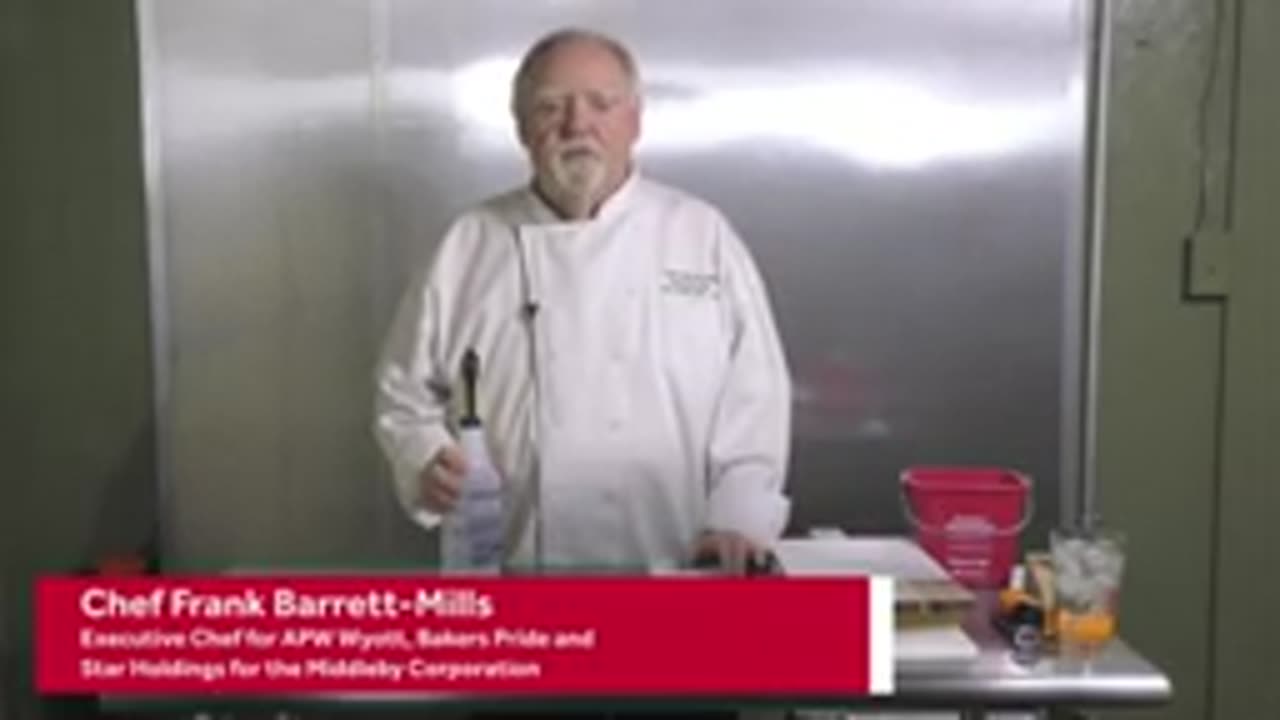Premium Only Content

Food Safety_ Cleaning Kitchen Workspaces
Here’s an outline for a **Food Safety Training Video: Cleaning Kitchen Workspaces** tailored to kitchen professionals to emphasize hygiene and safety protocols:
---
### **FOOD SAFETY: CLEANING KITCHEN WORKSPACES**
#### **1. Introduction**
- **Importance of Food Safety:** How cleanliness impacts food safety, prevents cross-contamination, and protects customer health.
- **Purpose of the Training:** To ensure kitchen workspaces are maintained to the highest hygiene standards.
---
#### **2. Cleaning vs. Sanitizing**
- **Definition:**
- Cleaning: Removing visible dirt, grease, and debris.
- Sanitizing: Reducing harmful bacteria to safe levels.
- **When to Clean vs. Sanitize:**
- Clean before and after food preparation.
- Sanitize after cleaning to eliminate bacteria.
---
#### **3. Tools and Materials**
- **Essential Tools:**
- Cleaning cloths (color-coded for specific areas).
- Scrub brushes, sponges, and mops.
- **Approved Cleaning Agents:**
- Degreasers for tough stains.
- Food-safe sanitizers for surfaces.
- **Protective Gear:**
- Gloves, aprons, and safety goggles.
---
#### **4. Step-by-Step Cleaning Procedures**
**A. Food Preparation Areas**
1. Remove debris: Scrape off leftover food and debris.
2. Wash: Use a cleaning solution to scrub surfaces.
3. Rinse: Remove all cleaning residues with clean water.
4. Sanitize: Apply food-safe sanitizer and let air dry.
**B. Equipment and Appliances**
1. Turn off and unplug appliances.
2. Remove detachable parts and soak in warm, soapy water.
3. Clean inside and outside surfaces with a degreaser.
4. Rinse thoroughly and sanitize.
**C. Floors and Walls**
1. Sweep floors to remove loose debris.
2. Mop with a disinfectant solution.
3. Wipe down walls and splash zones.
**D. Trash Areas**
1. Empty trash bins and clean them with disinfectant.
2. Replace liners daily or as needed.
3. Ensure bins are stored away from food preparation zones.
---
#### **5. High-Risk Zones to Address**
- Cutting boards (clean thoroughly between uses to prevent cross-contamination).
- Handles of appliances, doors, and drawers.
- Hard-to-reach areas like under sinks and behind stoves.
---
#### **6. Common Mistakes to Avoid**
- Using the same cloth or sponge for multiple areas.
- Overusing cleaning agents without rinsing properly.
- Forgetting to clean and sanitize tools like knives and peelers.
---
#### **7. Waste Disposal and Pest Control**
- Segregate organic, recyclable, and general waste.
- Dispose of grease and food scraps in sealed containers.
- Regularly check for signs of pests and report any findings.
---
#### **8. Cleaning Schedules**
- **Daily:** Countertops, cutting boards, trash removal, and appliance surfaces.
- **Weekly:** Deep clean ovens, refrigerators, and ventilation hoods.
- **Monthly:** Clean storage cabinets and perform pest inspections.
---
#### **9. Final Steps**
- Perform a visual inspection after cleaning.
- Keep records of cleaning activities for audits.
- Report maintenance issues (e.g., broken equipment, leaks).
---
#### **10. Wrap-Up**
- Recap the importance of cleanliness for food safety.
- Encourage adherence to cleaning protocols.
- Thank the team for their commitment to maintaining high standards.
---
Would you like detailed scripting or visuals for this training module?
-
 2:48
2:48
Steven Crowder
16 hours agoCROWDER CLASSICS: What’s This? | Nightmare Before Kwanzaa (Nightmare Before Christmas Parody)
214K12 -
 33:49
33:49
Quite Frankly
12 hours agoThe Christmas Eve Midnight Telethon
12.1K1 -
 2:12:46
2:12:46
Price of Reason
12 hours agoAmber Heard BACKS Blake Lively Lawsuit Against Justin Baldoni! Is Disney CEO Bob Iger in TROUBLE?
5.3K4 -
 1:01:17
1:01:17
The StoneZONE with Roger Stone
6 hours agoChristmas Edition: Why the Panama Canal is Part of the America First Agenda | The StoneZONE
40.4K19 -
 LIVE
LIVE
LFA TV
17 hours agoLFA TV CHRISTMAS EVE REPLAY
662 watching -
 LIVE
LIVE
tacetmort3m
1 day ago🔴 LIVE - THE ZONE KEEPS PULLING ME BACK - STALKER 2 - PART 15
748 watching -
 22:45
22:45
Brewzle
14 hours agoI Went Drinking In A Real Bourbon Castle
25.9K3 -
 48:36
48:36
PMG
1 day ago $1.87 earned"Parkland Parent Speaks Out On Kamala Harris Using Victims"
19.2K3 -
 4:06
4:06
The Lou Holtz Show
12 hours agoCoach Lou Holtz’s Heartfelt Christmas Message 🎄 | Family, Faith & Notre Dame Spirit 💚 #christmas
14.5K -
![ROSEANNE BARR - Her Journey, TRUMP, and the MAGA GOLDEN AGE! [INTERVIEW]](https://1a-1791.com/video/s8/1/M/m/B/2/MmB2v.0kob.1-small-ROSEANNE-BARR-Her-Journey-T.jpg) 51:35
51:35
Dr Steve Turley
1 day ago $17.95 earnedROSEANNE BARR - Her Journey, TRUMP, and the MAGA GOLDEN AGE! [INTERVIEW]
49.9K51